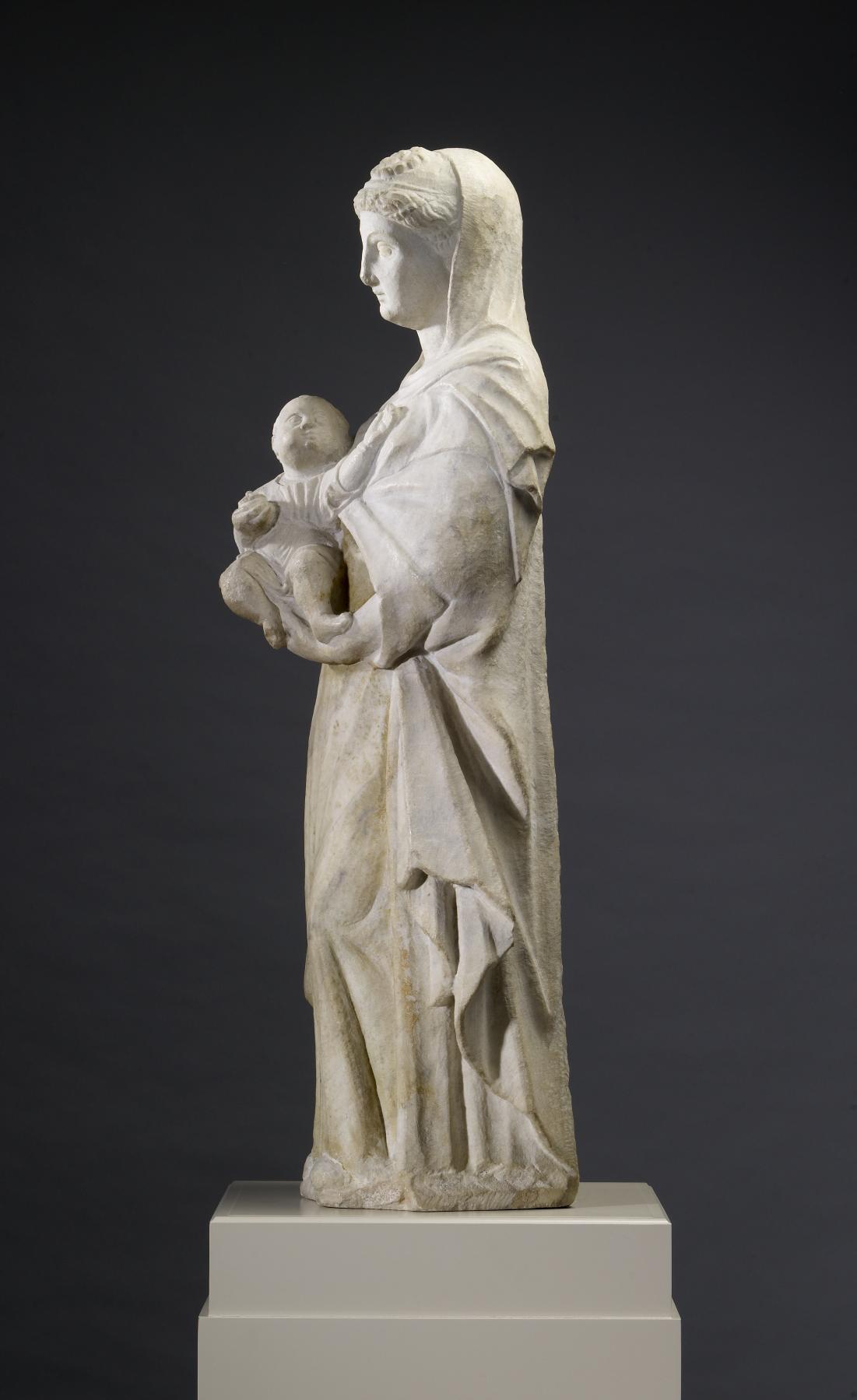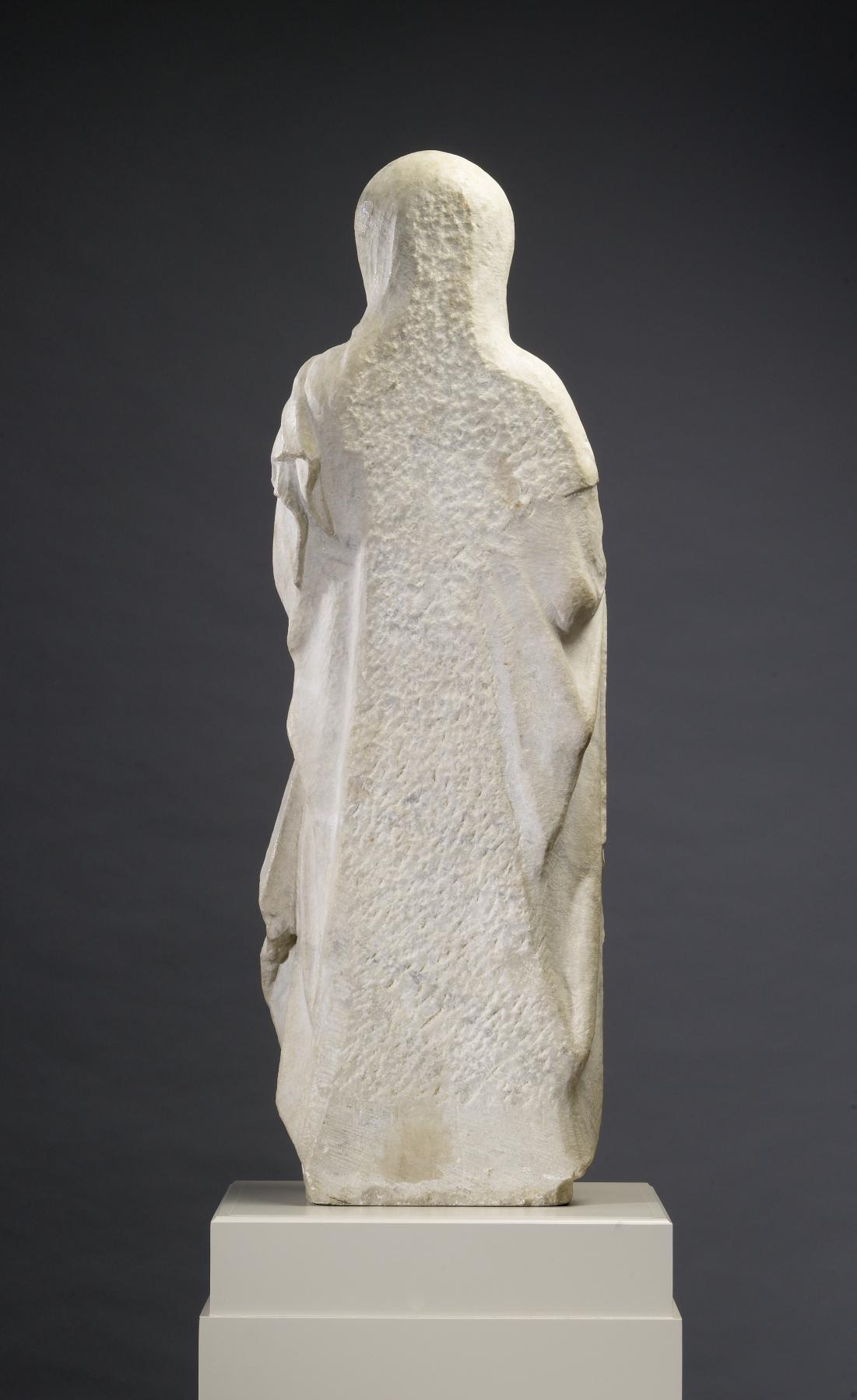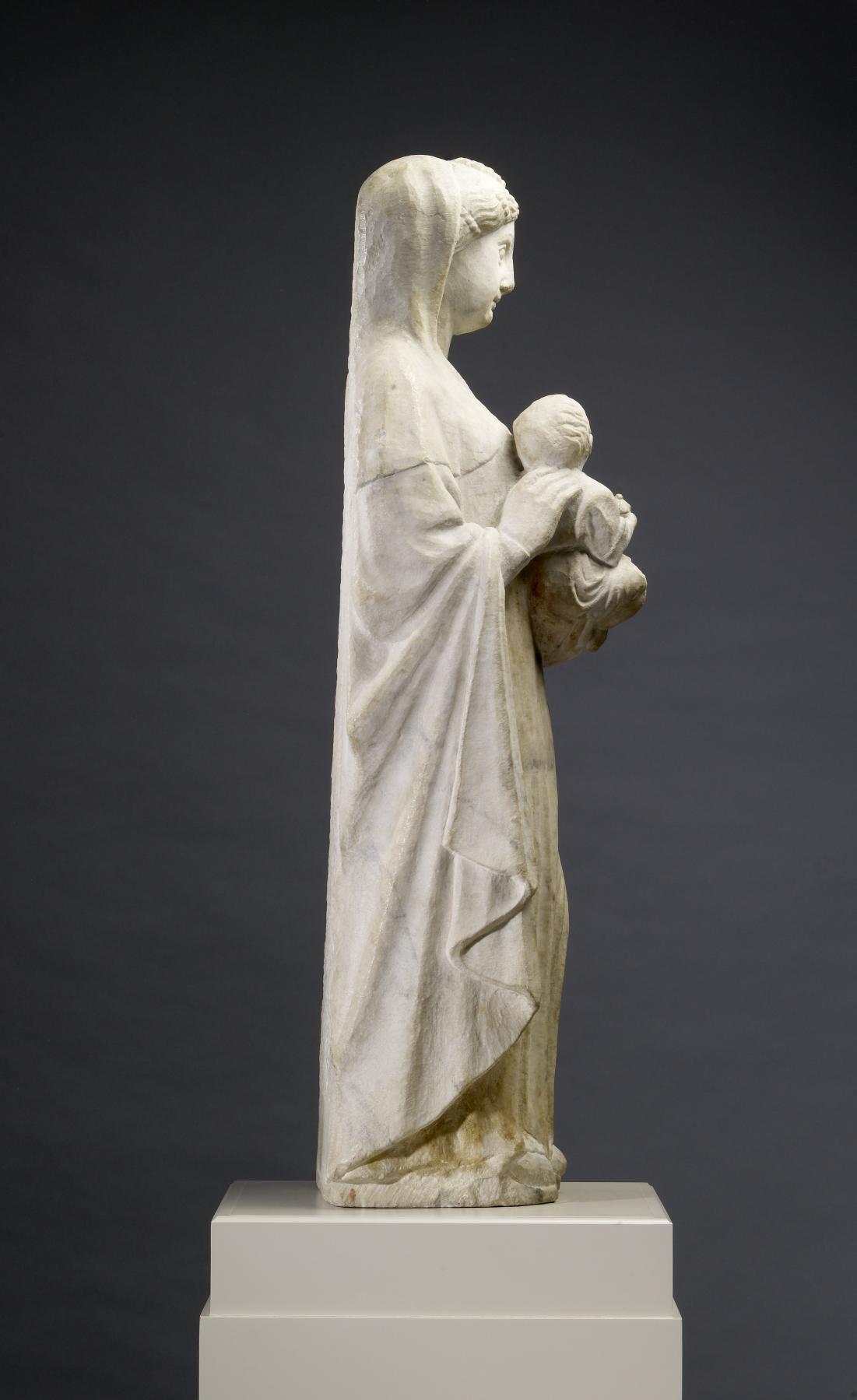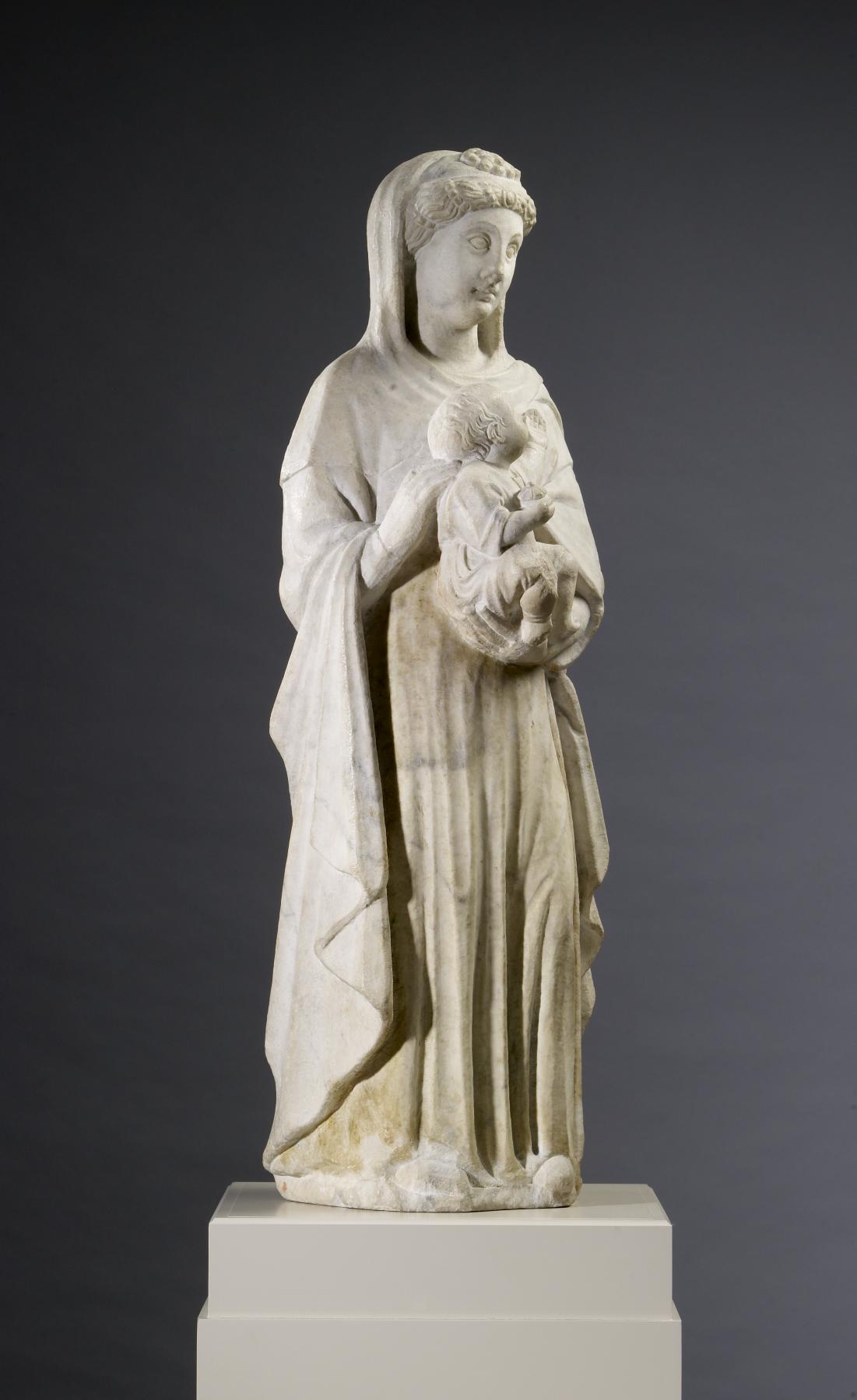Madonna and Child
(Medieval Europe )
This majestic statue would originally have been placed in a niche or arch-shaped enclosure decorating an interior architectural structure, such as a tomb or ciborium (a canopy-like structure placed over the altar). Arnolfo designed numerous such monuments, though many have been damaged or dismantled.
Arnolfo's sculpture is influenced by his observation of antique models. The drapery derives from Roman togas, which he would have seen represented on ancient sarcophagi. Classical borrowings are complemented by his dedication to naturalism, evident in the face and gesture of the Christ child, which goes beyond that of his contemporaries. The Virgin's head was probably completed by an assistant.
Arnolfo was also a famous architect; his buildings included the Cathedral of Florence.
Provenance
Provenance (from the French provenir, 'to come from/forth') is the chronology of the ownership, custody, or location of a historical object. Learn more about provenance at the Walters.
Christine Alexander (Mrs. Breckenridge Long), Rome and Laurel, Maryland [date of acquisition unknown], by purchase; Walters Art Museum, 1959, by bequest.
Exhibitions
| 2005-2006 | Arnolfo: Alle Origini del Rinascimento Fiorentino. Museo dell'Opera del Duomo, Firenze. |
Geographies
Italy, Rome (Place of Origin)
Measurements
H: 31 x W: 10 3/8 x D: 9 7/16 in. (78.8 x 26.4 x 23.9 cm)
Credit Line
Bequest of Mrs. Breckenridge Long, 1959
Location in Museum
Not on view
Accession Number
In libraries, galleries, museums, and archives, an accession number is a unique identifier assigned to each object in the collection.
In libraries, galleries, museums, and archives, an accession number is a unique identifier assigned to each object in the collection.
27.561












